
On 5 March 1979, Voyager 1 made its closest approach to Jupiter. What it discovered astounded navigators at the Jet Propulsion Laboratory in California. Not least of all astronomer Linda Morabito, who had been analysing an image taken by the spacecraft and saw a puzzling feature that turned out to be a volcanic plume off the limb of Io. It was 270 kilometres (170 miles) tall, spewing sulphur into the airless sky with great ferocity. This volcano came to be known as Pele, after the Hawaiian fire goddess, and its discovery was hugely significant: it was the first time that an erupting volcano had been found anywhere other than Earth.
It wasn’t the first time that alien volcanoes had caught the imagination. Missions to the Moon had uncovered basalt samples some 3.3 billion years old, and Apollo 15 landed close to Hadley Rille, an immense groove on the Moon 1.5 kilometres (0.9 miles) wide and 300 metres (984 feet) deep. This groove likely originated as a lava tube whose roof collapsed. The unmanned Mariner 9 highlighted a varied Martian terrain in 1977 which had huge volcanoes, including the mammoth Olympic Mons. Yet these discoveries were all completely extinct.
Io proved to be a swirl of colours thanks to a thin atmosphere laden with sulphur, and was showing signs of being the most geologically active body in the Solar System: more than 150 active volcanoes – of more than 400 in total – have been discovered there. Moons Enceladus and Triton also have active volcanoes. Venus, too, as well as the Jovian moon Europa. “Although we have volcanoes on Earth, you have to study somewhere different to understand the big picture,” says Dr Rosaly Lopes of NASA’s Jet Propulsion Laboratory.
Denne historien er fra Issue 134-utgaven av All About Space UK.
Start din 7-dagers gratis prøveperiode på Magzter GOLD for å få tilgang til tusenvis av utvalgte premiumhistorier og 9000+ magasiner og aviser.
Allerede abonnent ? Logg på
Denne historien er fra Issue 134-utgaven av All About Space UK.
Start din 7-dagers gratis prøveperiode på Magzter GOLD for å få tilgang til tusenvis av utvalgte premiumhistorier og 9000+ magasiner og aviser.
Allerede abonnent? Logg på
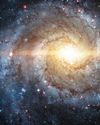
MYSTERIES OF THE UNI WHERE ARE ALL THE SPIRAL GALAXIES?
There are far fewer spiral galaxies than elliptical ones in the Supergalactic Plane, and scientists are keen to discover why
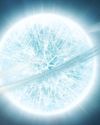
ZOMBIE STARS
+10 OTHER TERRIFYING SPACE OBJECTS

HOW TO BEAT LIGHT POLLUTION
Thought it was impossible to observe the wonders of the night sky from towns and cities? Think again. Follow our tips and tricks on successfully observing through sky glow
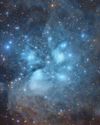
15 STUNNING STAR CLUSTERS
These beautiful stellar groupings are spattered across the cosmos
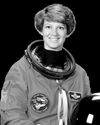
Eileen Collins "It was a difficult mission...we were the first to see Mir"
Having served as both the first female pilot and first female commander of NASA's Space Shuttle, Collins boosted the involvement of women in space exploration to a whole new level
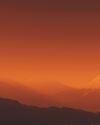
MARS LEAKS FASTER WHEN IT'S CLOSER TO THE SUN
The Red Planet has lost enough water to space to form a global ocean hundreds of kilometres deep
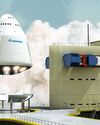
FUTURE TECH KANKOH-MARU
This ambitious reusable spacecraft will be capable of taking 50 people to and from orbit
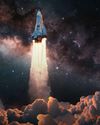
THE FINAL FRONTIER
Beyond the reach of the Sun is a fascinating region of the cosmos that were only just beginning to explore
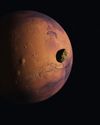
A long-lost moon could explain Mars' weird shape and extreme terrain
A long-lost moon could explain why Mars is so different from the other rocky planets in the Solar System. Today Mars has two tiny moons.
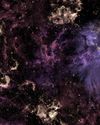
A sprinkling of cosmic dust may have helped kick-start life on Earth
Cosmic dust may have helped kick-start life on Earth. New findings challenge a widely held assumption that this wasn't a plausible explanation.